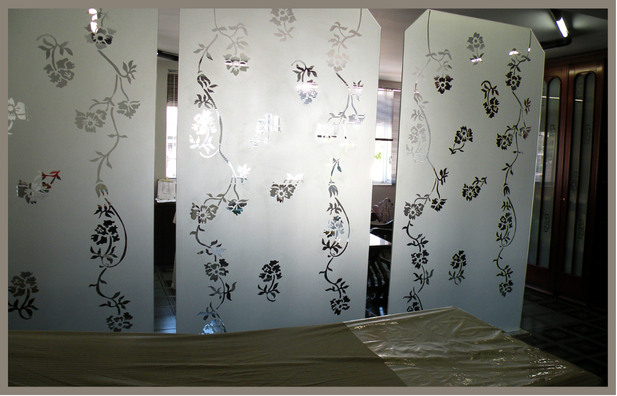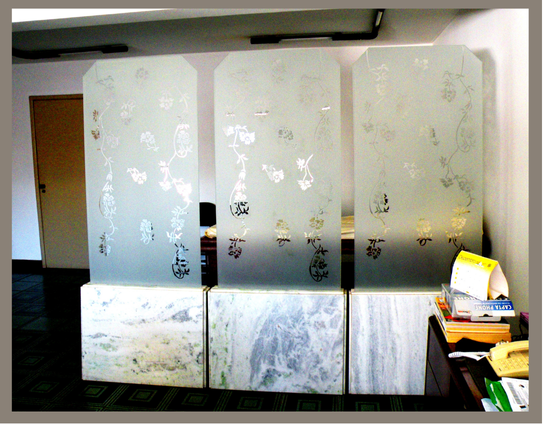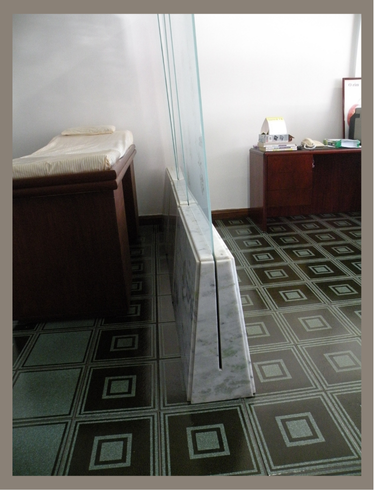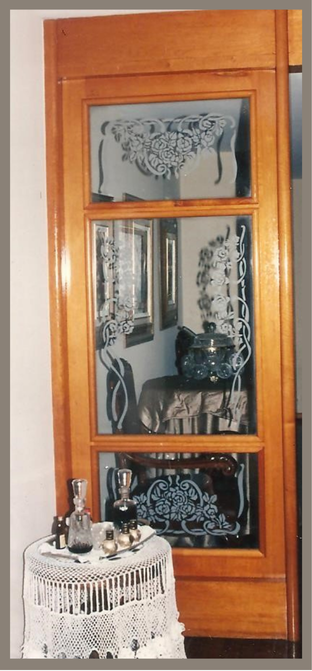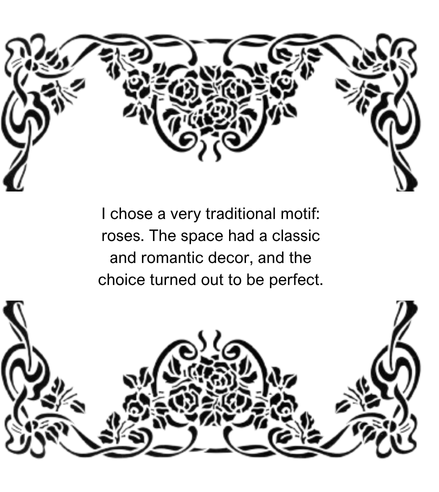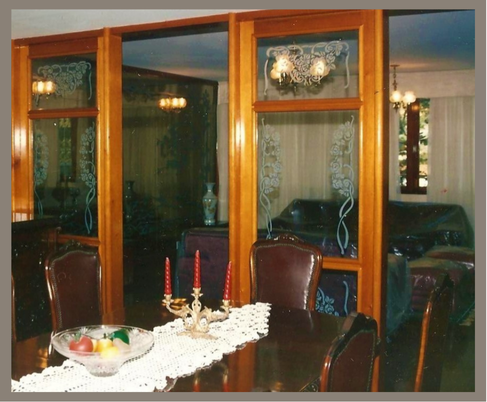“My work’s photos were not taken professionally and may not be perfect. I have included cultural texts explaining the artists who inspired each of my designs.” Nadja Bara
Much of this rare material, which inspired my works is published originally appeared in late 19th-century and early 20th-century catalogues from the following printers and typesetters:
Barnhart Bros. & Spindler (Chicago,)
H. Berthold (Berlin & Stuttgart),
Deberny et Peignot (Paris),
Joh. Enschedé & Sons (Haarlem, NL)
Vanderborght (Brussels),
E.J. Genzsch (Munich),
Successors to Benjamin Krebs (Frankfurt),
Keystone (Philadelphia),
J.G. Schelter & Giesecke (Leipzig),
Van Loey -Nouri (Brussels),
Wilhelm Woellmer(Berlin),among others
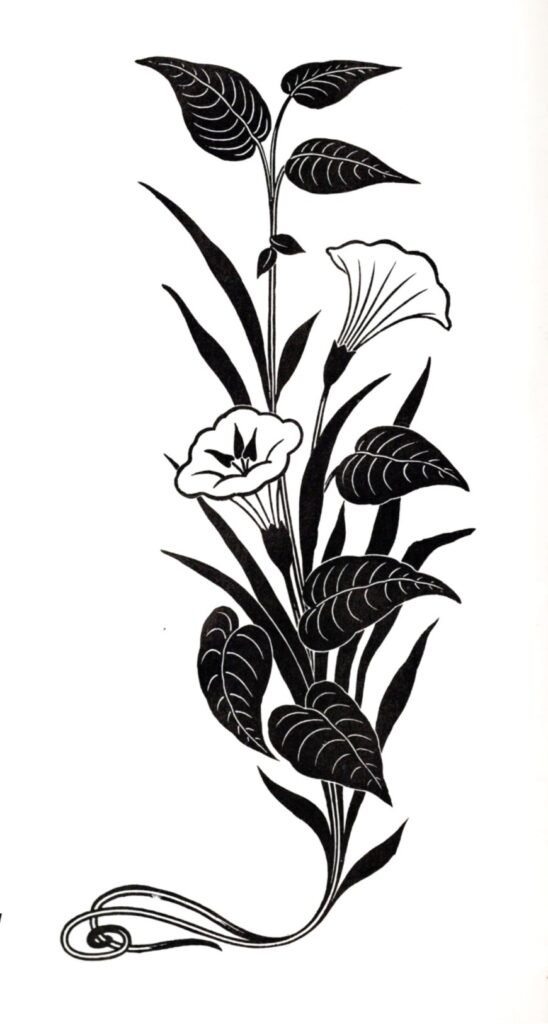
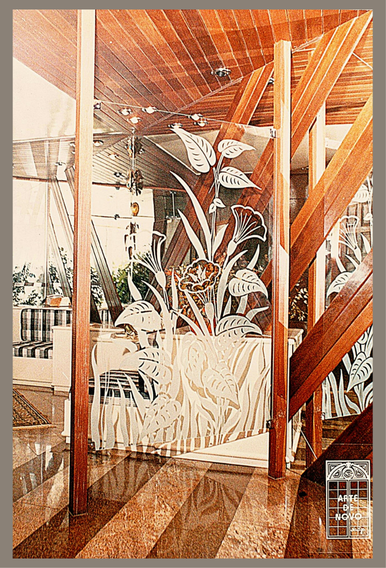
The enlargements of the
decorative motifs were made by hand, as were the vinyl
cutouts, which were later sandblasted to engrave the designs
“My work’s photos were not taken professionally and may not be perfect. I have included cultural texts explaining the artists who inspired each of my designs.” Nadja Bara
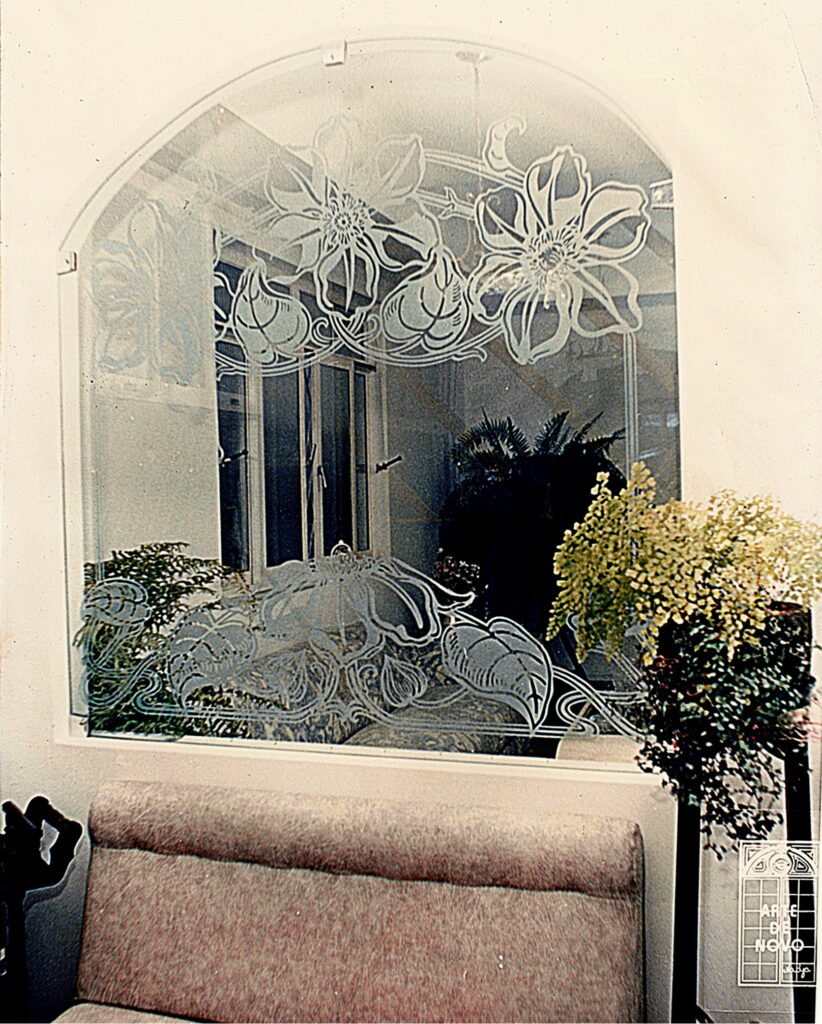
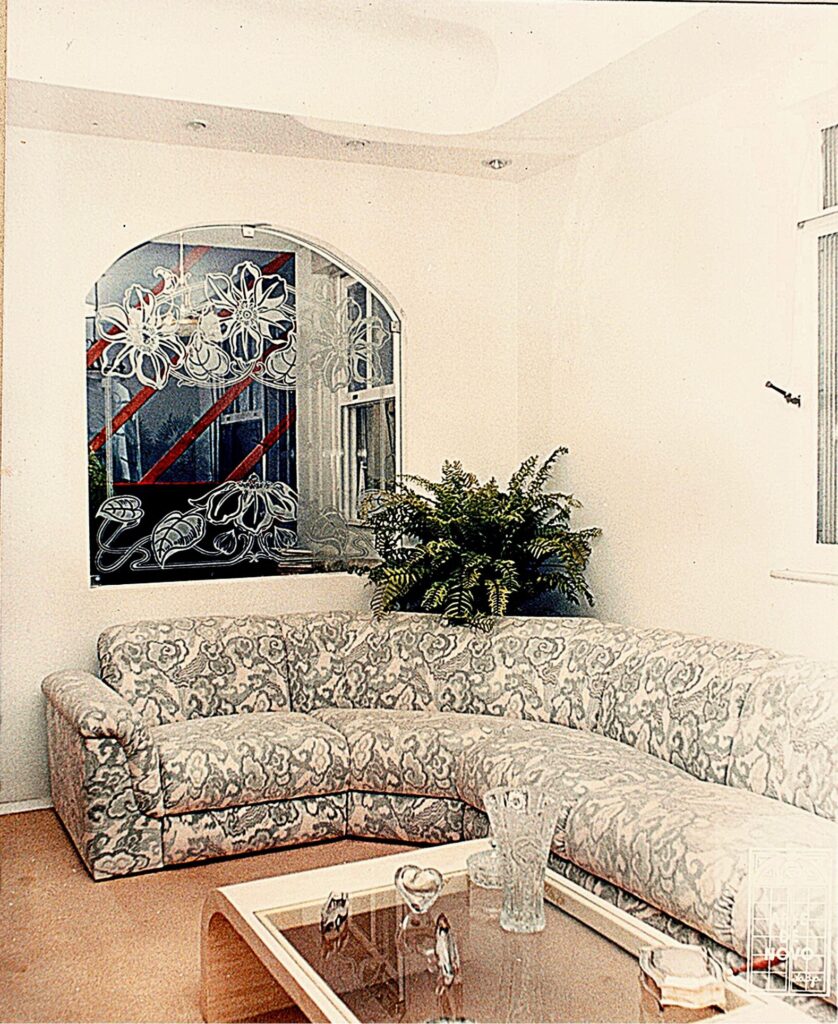
The turn-of-the-century Arts and Crafts movement revitalized many artistic and craft domains, including, of course, typography.
One noteworthy aspect was the typographical ornament, a long-standing tradition among the earliest printers once again brought to the avant garde of desing.
II have in my hands the edition from 1982, a treasury of authentic Art Nouveau typographic ornaments, selected from specimen catalogues of leading European and American type foundries, in the Solo Type.
Over 800 of all types include the patented Art Nouveau .This collection is specially rich in floral and plant ornaments, including many recognizable flowers, trees, fruits, and vines . Animal motifs-butterflies, dragonflies, fishes, lions, peacocks, pheasan, snails and turtles-abound, as do fluid redenring of humans figures, fabulous creatures and other, purely decoratives elements.
This partition was a real challenge for me.
Dr. Maurice wanted to bring joy, peace, and lightness to the partition in his office.
He specifically asked for a design that would make his patients not feel like they were in a clinic. I reproduced the flowers from the book-Solo Type , and created a sense of movement
with them.
.
